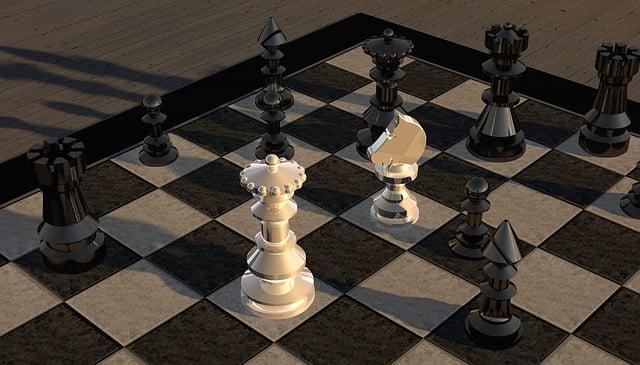Table of Contents
I used to see myself as a kind of architect of the mind.
For years, as a psychologist steeped in the rigors of evidence-based practice, my office was my workshop, and Cognitive Behavioral Therapy (CBT) was my master blueprint.
It was elegant, logical, and, most importantly, it was proven.
I had a structured, rational toolkit for deconstructing faulty thinking and rebuilding healthier behaviors.
I was confident, competent, and I believed deeply in the tools I wielded.
Then I met James.
On paper, his case was straightforward: a textbook presentation of anxiety and depression that I’d seen a hundred times.
But underneath the surface symptoms was a history of complex trauma—a childhood marred by instability and emotional neglect.
Confidently, I opened my CBT toolkit.
We identified his cognitive distortions.
We set up behavioral activation homework.
We began the systematic work of challenging his core belief that the world was an unsafe place.
And he got worse.
Every missed homework assignment wasn’t a simple setback; it was another piece of evidence for his deeply held conviction that he was a failure.1
My attempts to logically restructure his belief that he couldn’t trust anyone felt like a profound invalidation.
His life had taught him that lesson with brutal consistency.
My blueprint, my “gold standard” therapy, was telling him his reality was a “cognitive error”.3
The therapy wasn’t just stalling; it was causing harm.
We were trying to pave over a chasm, and the foundation was crumbling beneath us.
That failure shattered my professional confidence and forced me to ask a terrifying question: What happens when your best blueprint is not only wrong but is actively breaking the very thing you’re trying to build?
Part I: The Promise and Peril of a Perfect Blueprint
To understand why this failure hit so hard, you have to understand the power and elegance of the blueprint I had put so much faith in.
It wasn’t built on whims or theories alone; it was the culmination of a century-long quest to make psychotherapy a science.
The Allure of the Observable: Building the Foundation
In the early 20th century, psychology was at a crossroads.
To gain scientific legitimacy, it needed to move beyond the murky, subjective world of introspection.
The solution, proposed with revolutionary fervor by John B.
Watson, was behaviorism: a psychology that focused solely on what could be seen and measured.4
This wasn’t an oversight; it was a deliberate choice to trade the complexities of the inner world for the clarity of empirical data, a choice that formed the bedrock of my own training.6
This new science was built on two powerful pillars:
- Classical Conditioning: Pioneered by Russian physiologist Ivan Pavlov, this principle demonstrated that behaviors could be learned through association. In his famous experiments, Pavlov showed that by repeatedly pairing a neutral stimulus (a bell) with a stimulus that naturally causes a response (food causing salivation), the neutral stimulus alone would eventually provoke the response.8 This wasn’t just about dogs and bells; it was a powerful explanation for how a specific place, sound, or situation could become a trigger for debilitating anxiety or fear in humans.4
- Operant Conditioning: B.F. Skinner took this a step further with his theory of operant conditioning, which posits that our actions are shaped by their consequences.10 Behaviors followed by reinforcement (a reward) are more likely to be repeated, while those followed by punishment (a negative consequence) are less likely to occur.12 This gave therapists a clear, actionable lever for change: systematically reinforce the behaviors you want to see, and the problematic ones will fade away.
This “first wave” of behavioral therapy was powerful.
It offered predictable, testable methods for changing behavior.
But it did so by treating the mind as a “black box”—an unknowable space between stimulus and response that was best left ignored.13
The Cognitive Revolution: Adding Thought to Action
By the mid-20th century, it was becoming clear that the black box couldn’t be ignored forever.
A purely behavioral model couldn’t fully explain the richness and complexity of human experience.
This growing awareness set the stage for the “cognitive revolution,” a second wave of therapy led by a psychiatrist who would fundamentally change the field: Aaron T.
Beck.
Trained as a psychoanalyst, Beck set out to empirically validate Freudian theories of depression.
Instead, his research consistently refuted them.14
He found that depression wasn’t rooted in a “need to suffer,” but in a stream of persistent, negative “automatic thoughts”.16
This was a groundbreaking insight.
The problem wasn’t just the external environment or the resulting behavior; it was the
thinking that happened in between.
From this, Beck developed the Cognitive Model, the core of CBT.
The principle is that our thoughts, feelings, and behaviors are inextricably linked.18
If you have the thought, “I’m a complete failure,” it will likely lead to feelings of shame and sadness, which in turn might lead to behaviors like withdrawing from friends or avoiding challenges.
CBT provides a structured method to break this cycle.
By learning to identify, evaluate, and challenge these automatic negative thoughts and cognitive distortions (like catastrophizing or all-or-nothing thinking), clients could change how they felt and behaved.19
For years, this was my golden hammer.
I had a manual, a set of worksheets, and a clear, evidence-based path forward.
For countless clients struggling with anxiety and depression, it worked beautifully.
The genius of Beck’s approach was that it brought the mind back into psychology without sacrificing scientific rigor.
He treated thoughts as observable, measurable, and modifiable events, creating a therapy that was both deeply human and empirically sound.14
It rightfully became the “gold standard.”
The Crack in the Foundation: When Blueprints Don’t Fit the Person
Returning to my work with James, the power of the CBT model only made its failure more stark.
The very strengths of the therapy became its critical weaknesses in the face of his complex trauma.
- Invalidating “Rationality”: CBT asks clients to challenge irrational thoughts. But James’s core belief—”I am worthless”—wasn’t irrational in the context of his life. It was a painful but logical conclusion he had drawn from a childhood where he was treated as such.3 When I, his therapist, labeled this deeply ingrained survival belief as “dysfunctional,” I was unintentionally invalidating his entire lived experience.1
- The Body Keeps the Score: My approach was entirely “top-down,” focused on changing his thoughts. But his trauma wasn’t just an idea; it was a physiological reality stored in his body.23 His hypervigilance, his panic, his inability to relax—these were the products of a nervous system that had been fundamentally rewired for threat.25 No amount of logical thought-challenging could soothe the terror that lived in his cells.
- The Tyranny of Homework: The structured nature of CBT, with its reliance on thought records and behavioral homework, became an engine of shame.26 His trauma-impaired executive functions made it incredibly difficult to complete these tasks. Each unfinished worksheet was not a therapeutic misstep but further proof of his own inadequacy, deepening the very wounds we were trying to heal.1
The painful realization was this: the entire CBT model implicitly assumes a client possesses a baseline of safety, relational trust, and nervous system regulation.
It presumes they have the internal capacity to step back and analyze their own thoughts calmly.
For survivors of complex trauma, these are the very capacities that have been shattered.28
The therapy was demanding that James use tools that his trauma had taken from him.
The blueprint didn’t fit because the ground it was meant to be built on was gone.
Part II: The Kintsugi Epiphany: Mending with Gold
The failure with James sent me into a professional crisis of faith.
My blueprints were useless, my golden hammer had shattered.
I was adrift, forced to question the very foundations of my practice.
It was in this period of uncertainty that I stumbled upon an image that would change everything.
It was a simple ceramic bowl, beautifully and intricately repaired.
The caption explained it was an example of Kintsugi.
Kintsugi is the centuries-old Japanese art of repairing broken pottery with a special lacquer dusted or mixed with powdered gold, silver, or platinum.30
The philosophy behind it struck me with the force of a revelation:
- The damage is not hidden. The gold-filled cracks are not disguised but are celebrated as a unique and beautiful part of the object’s history.
- The goal is not to return to an “original” state. The repaired piece is transformed. It is often considered more beautiful and valuable for having been broken and mended.
- The process is one of patient artistry, not mechanical repair. It requires mindfulness, care, and an appreciation for the object’s journey.
In that moment, a new paradigm for healing crystallized in my mind.
Healing is not about erasing the damage or “fixing” what is broken.
It is about mindfully mending the fractures with the “gold” of acceptance, self-compassion, and lived values, creating a new, more resilient, and integrated whole. This was the antidote to the mechanistic “fix-it” model that had failed James so profoundly.
It wasn’t about getting rid of the cracks; it was about learning how to fill them with gold.
Part III: The Kintsugi Method: A Framework for Integrated Healing
This Kintsugi philosophy became the foundation for a new, integrated approach to therapy.
It draws heavily on the “third wave” of behavioral therapies—such as Acceptance and Commitment Therapy (ACT) and Dialectical Behavior Therapy (DBT)—which evolved precisely to address the limitations of standard CBT.
This new wave shifts the focus from changing the content of our thoughts to changing our relationship to them.31
| Table 1: The Three Waves of Behavioral Therapy | ||
| Domain | First Wave (Behaviorism) | Second Wave (CBT) |
| Core Philosophy | Behavior is learned from the environment. | Our thoughts determine our feelings and behaviors. |
| View of Suffering | Maladaptive learning; faulty conditioning. | Irrational thoughts; cognitive distortions. |
| Primary Goal | Change observable behavior. | Identify and change distorted thoughts. |
| Key Metaphor | The mind is a “blank slate” (tabula rasa). | The person is a “scientist” testing their thoughts. |
The Kintsugi Method operationalizes this third-wave evolution into a practical framework, following the stages of the art form itself.
Pillar 1: Honoring the Break (Acceptance and Radical Presence)
Before an artisan can mend a broken vase, they must first carefully gather every shard.
They don’t discard the small pieces or pretend the cracks don’t exist.
They honor the reality of the break.
In therapy, this is the work of acceptance.
Instead of immediately trying to fight or fix painful thoughts and feelings, we first learn to make space for them.
This pillar integrates several core third-wave concepts:
- Acceptance: Drawn from ACT, this is the radical willingness to allow our internal experiences—thoughts, emotions, memories, physical sensations—to be exactly as they are, without trying to control, change, or eliminate them.33 It is the direct opposite of the “experiential avoidance” that keeps so many people stuck.
- Mindfulness: Drawn from DBT and Mindfulness-Based Cognitive Therapy (MBCT), this is the practical skill of paying attention to the present moment, on purpose, and non-judgmentally.19 It’s how we train ourselves to sit with the “broken pieces” without being swept away by them.
- Cognitive Defusion: This crucial ACT technique teaches us to see our thoughts as thoughts—simply words, images, and sounds passing through our minds—rather than as literal truths or direct orders.33 We learn to watch the thought “I am worthless” float by like a leaf on a stream, rather than fusing with it and believing it defines us.
Pillar 2: Preparing the Gold (Building Somatic and Emotional Resources)
A Kintsugi artisan cannot begin mending until the lacquer is mixed and the gold is prepared.
The pieces must be stable enough to be handled.
This is the step that standard CBT skips with complex trauma.
Before we can process traumatic memories, the client must have the resources to stay grounded and regulated.
This pillar is about building that internal stability:
- Distress Tolerance: A cornerstone of DBT, these are concrete, in-the-moment skills for surviving crisis situations without making them worse.19 Techniques like the TIPP skill (changing body
Temperature with cold water, Intense exercise, Paced breathing, and Paired muscle relaxation) are emergency brakes for an overwhelmed nervous system. - Emotion Regulation: Moving beyond just tolerating distress, this DBT module teaches clients to understand the function of their emotions, reduce their vulnerability to negative emotions, and increase their experience of positive ones.19
- Somatic Awareness: Drawing from body-based therapies, this involves learning to listen to the body’s wisdom.23 It’s about “bottom-up” processing: noticing physical sensations and learning to use them as cues for self-regulation, effectively befriending the body that trauma so often turns into a source of fear.
Pillar 3: Mending with Gold (Values-Driven Action and Post-Traumatic Growth)
Only when the pieces are honored and the resources are prepared can the true mending begin.
The artisan painstakingly applies the gold-infused lacquer, joining the shards and transforming the object into something new.
In therapy, this is the stage where the client begins to consciously build a life of meaning, not in spite of their history, but by integrating it.
The “gold” is composed of:
- Values Clarification: At the heart of ACT is the process of helping clients connect with what truly matters to them at their core—things like connection, creativity, compassion, or adventure.33 These values become the compass that guides every choice and action. They are the “why” that makes the hard work of healing worthwhile.
- Committed Action: This is the third-wave evolution of behavioral activation. Instead of just scheduling pleasant activities to improve mood, committed action involves taking concrete steps that are in the service of one’s chosen values.34 Going for a walk is no longer just “exercise to fight depression”; it is a committed action in the service of a value for health and connection with nature. This infuses behavior change with deep, personal meaning.
- Self-as-Context: This ACT concept helps clients connect with an “observing self”—the consistent, stable part of you that is aware of your thoughts, feelings, and experiences but is not defined by them.34 It is the sky that holds all the weather. Cultivating this perspective allows the trauma to become
part of one’s story, rather than the entirety of one’s identity. This is the foundation of post-traumatic growth.
With this framework, a client like James could begin to heal.
Instead of being shamed by homework, he would start with tiny, values-driven actions.
If he valued connection, a committed action might be to text one friend.
That small act, infused with the “gold” of his values, would begin the process of mending, creating a new pattern of resilience and meaning where the old blueprint saw only failure.
| Table 2: The Kintsugi Method in Practice | ||
| The Kintsugi Pillar | Core Therapeutic Concepts | Sample Client Exercise |
| 1. Honoring the Break | Acceptance, Mindfulness, Cognitive Defusion | The “Leaves on a Stream” Exercise: Visualize sitting by a gently flowing stream. As thoughts arise, place each one on a leaf and watch it float by without trying to change it or hold onto it. This practices observing thoughts without getting fused with them.33 |
| 2. Preparing the Gold | Distress Tolerance, Emotion Regulation, Somatic Awareness | Create a “Self-Soothing Kit”: Assemble a physical box with items that engage all five senses to use during moments of high distress (e.g., a soft blanket, a scented candle, a calming playlist, a smooth stone, a piece of dark chocolate). This builds tangible resources for self-regulation.19 |
| 3. Mending with Gold | Values Clarification, Committed Action, Self-as-Context | The “Values Compass” Exercise: Identify a core value (e.g., “Creativity”). Brainstorm one small, concrete action to take this week that moves you toward that value (e.g., “Spend 15 minutes sketching,” “Visit an art gallery website”). This links behavior directly to meaning.34 |
Conclusion: From Technician to Artisan
I began my career as a technician, confident in my blueprints and tools.
My work with James, and the painful failure that came with it, forced me to become an artisan.
An artisan understands the principles of the craft—the properties of clay and glaze, the chemistry of the kiln—but they also know that each piece is unique.
They don’t force a broken shard to fit a preconceived design.
They see the breaks not as flaws to be erased, but as opportunities for transformation.
The Kintsugi paradigm taught me that true healing isn’t about becoming undamaged, as if the trauma never happened.
It is the courageous and compassionate process of integrating our experiences of brokenness, allowing them to become part of a stronger, more meaningful, and uniquely beautiful whole.
Our scars are not evidence of our damage; they are testaments to our survival, etched in gold.
Works cited
- Inherent Limitations of Cognitive Behavior Therapy (CBT), accessed August 11, 2025, https://community.counseling.org/blogs/david-metzner1/2021/03/01/limitations-of-CBT
- Pros & Cons of CBT Therapy, accessed August 11, 2025, https://www.thecbtclinic.com/pros-cons-of-cbt-therapy/
- Why CBT Might Not Be Working for You | Psychology Today, accessed August 11, 2025, https://www.psychologytoday.com/us/blog/true-self-empowerment/202301/why-cbt-might-not-be-working-for-you
- Behaviorism In Psychology, accessed August 11, 2025, https://www.simplypsychology.org/behaviorism.html
- The History of Psychology—Behaviorism and Humanism – Lumen Learning, accessed August 11, 2025, https://courses.lumenlearning.com/waymaker-psychology/chapter/reading-behaviorism/
- Behaviorism | Internet Encyclopedia of Philosophy, accessed August 11, 2025, https://iep.utm.edu/behaviorism/
- What’s wrong with behaviorism? : r/askphilosophy – Reddit, accessed August 11, 2025, https://www.reddit.com/r/askphilosophy/comments/2mct5q/whats_wrong_with_behaviorism/
- Understanding Behaviorism – CONCEPT Professional Training, accessed August 11, 2025, https://concept.paloaltou.edu/resources/business-of-practice-blog/understanding-behaviorsm
- Behaviorism – EdTech Books, accessed August 11, 2025, https://edtechbooks.org/studentguide/behaviorism
- Behavioral Perspective – The Decision Lab, accessed August 11, 2025, https://thedecisionlab.com/reference-guide/philosophy/behavioral-perspective
- Understanding Behavioral Theory, accessed August 11, 2025, https://www.wgu.edu/blog/what-behavioral-learning-theory2005.html
- Principles Of Behavioral Therapy – FasterCapital, accessed August 11, 2025, https://fastercapital.com/topics/principles-of-behavioral-therapy.html/1
- Behaviorism – Wikipedia, accessed August 11, 2025, https://en.wikipedia.org/wiki/Behaviorism
- Cognitive Behavior Therapy – StatPearls – NCBI Bookshelf, accessed August 11, 2025, https://www.ncbi.nlm.nih.gov/books/NBK470241/
- A Brief History of Aaron T. Beck, MD, and Cognitive Behavior Therapy – PMC, accessed August 11, 2025, https://pmc.ncbi.nlm.nih.gov/articles/PMC9667129/
- Aaron Beck – Wikipedia, accessed August 11, 2025, https://en.wikipedia.org/wiki/Aaron_Beck
- The History of Cognitive Behavior Therapy – Beck Institute Cares, accessed August 11, 2025, https://cares.beckinstitute.org/about-cbt/history-of-cbt/
- What Principle Underlies Cognitive Behavioral Therapy (CBT)?, accessed August 11, 2025, https://reachbh.org/what-principle-underlies-cognitive-behavioral-therapy/
- The Basics of Behavioral Therapy, accessed August 11, 2025, https://www.magnetaba.com/blog/the-basics-of-behavioral-therapy-8683f
- CBT Techniques: Tools for Cognitive Behavioral Therapy – Healthline, accessed August 11, 2025, https://www.healthline.com/health/cbt-techniques
- Cognitive therapy – Wikipedia, accessed August 11, 2025, https://en.wikipedia.org/wiki/Cognitive_therapy
- Aaron T. Beck | Beck Institute – Beck Institute, accessed August 11, 2025, https://beckinstitute.org/about/dr-aaron-t-beck/
- Why Talk Therapy Doesn’t Resolve Trauma… And What Does …, accessed August 11, 2025, https://holisticmentalhealthnyc.com/why-talk-therapy-doesnt-resolve-trauma-and-what-does/
- Why CBT Doesn’t Work For Trauma Recovery | Get Help Today, accessed August 11, 2025, https://www.directionscounseling.com/why-cbt-doesnt-work-for-trauma/
- Effects | The National Child Traumatic Stress Network, accessed August 11, 2025, https://www.nctsn.org/what-is-child-trauma/trauma-types/complex-trauma/effects
- Cognitive behavioral therapy – Mayo Clinic, accessed August 11, 2025, https://www.mayoclinic.org/tests-procedures/cognitive-behavioral-therapy/about/pac-20384610
- Strengths and Limitations of CBT – Corey Human Counsellor Brisbane – M1 Psychology, accessed August 11, 2025, https://m1psychology.com/strengths-and-limitations-of-cbt/
- Neglect of the complex: why psychotherapy for post-traumatic clinical presentations is often ineffective – PMC, accessed August 11, 2025, https://pmc.ncbi.nlm.nih.gov/articles/PMC4478904/
- What Is Complex Trauma? – Child Mind Institute, accessed August 11, 2025, https://childmind.org/article/what-is-complex-trauma/
- Speaking the Unspeakable: Healing Metaphors | Richard Nicastro …, accessed August 11, 2025, https://richardnicastro.com/2025/05/04/speaking-the-unspeakable-healing-metaphors/
- The Evolution of Cognitive Behavioural Therapy – The Third Generation and Its Effectiveness | Request PDF – ResearchGate, accessed August 11, 2025, https://www.researchgate.net/publication/318060672_The_Evolution_of_Cognitive_Behavioural_Therapy_-_The_Third_Generation_and_Its_Effectiveness
- What is Third Wave Cognitive Behavioral Therapy?, accessed August 11, 2025, https://3rdwavetherapy.com/about/what-is-third-wave-cognitive-behavioral-therapy/
- Acceptance and Commitment Therapy (ACT): What It Is – Cleveland Clinic, accessed August 11, 2025, https://my.clevelandclinic.org/health/treatments/acceptance-and-commitment-therapy-act-therapy
- Introduction to acceptance and commitment therapy | Advances in Psychiatric Treatment, accessed August 11, 2025, https://www.cambridge.org/core/journals/advances-in-psychiatric-treatment/article/introduction-to-acceptance-and-commitment-therapy/D67B44FDED4147CA35C1AA8FA9D3DDA5
- Dialectical Behavior Therapy: Current Indications and Unique …, accessed August 11, 2025, https://pmc.ncbi.nlm.nih.gov/articles/PMC2963469/
- Acceptance and Commitment Therapy and Psychological Well-Being: A Narrative Review, accessed August 11, 2025, https://pmc.ncbi.nlm.nih.gov/articles/PMC11837766/
- How Does Acceptance And Commitment Therapy (ACT) Work?, accessed August 11, 2025, https://positivepsychology.com/act-acceptance-and-commitment-therapy/






